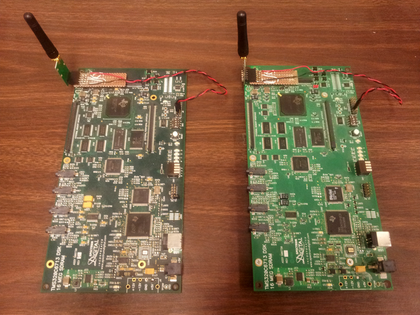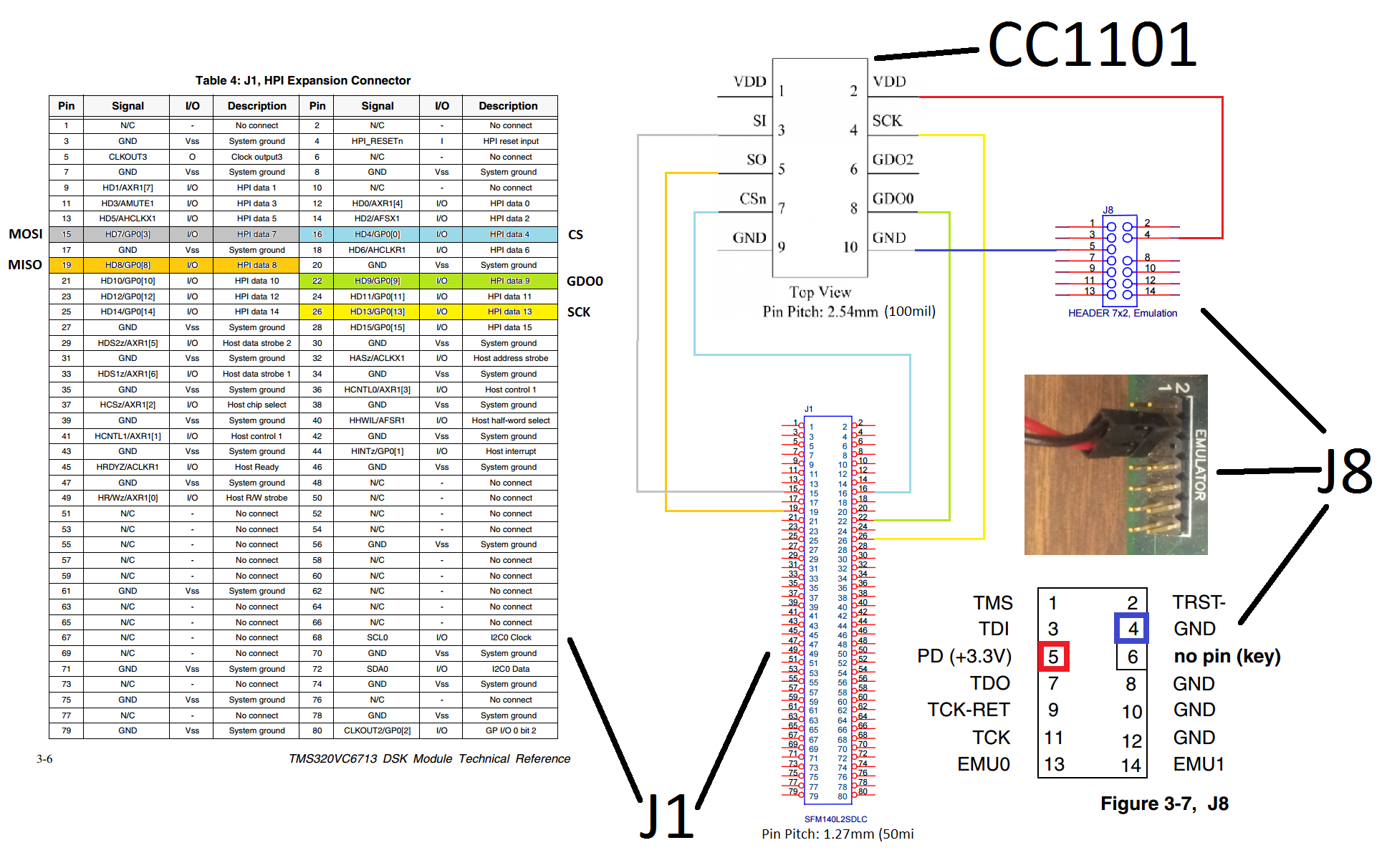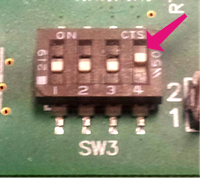rf link for c6713 dsks
what?
This project developed a reliable unidirectional radio frequency link to allow wireless data transfer from one TMS320C6713 DSK to another TMS320C6713 DSK. The link uses the GPIO ports on the DSKs and operates at 315MHz. The radios are based on the Texas Instruments CC1101 low-power RF transceiver chip and can operate at 315/433/868/915 MHz by simply modifying a three registers. The project involved developing a simple hardware interface between the radios and the DSKs and also developing software running on the DSKs to transmit and receive digital information.

why?
The motivation for this project was to provide an easy way to transfer digital information from one DSK to another. Past work has focused on acoustic communication techniques between DSKs (similar to chirp.io and the recently announced Chrome Tone extension. This project instead developed a simple and reliable radio frequency link between two DSKs using off-the-shelf hardware and the GPIO interface of the DSKs. This RF link allows one DSK to easily send information to another DSK without affecting standard operations like servicing interrupts from the AIC23 codec.
who?
The undergraduate students who constructed and tested the DSK RF Link are Stefan Gvozdenovic and Alex Ryan. Project assistance and laboratory space was provided by Professor D. Richard Brown in spinlab.
details
The radios used in this project are similar to these RF transceiver modules. The image below shows the hardware schematic of how the radio is connected to the J1 HPI expansion connector of the C6713 DSK. Power for the radio is obtained from a jumper connection to J8 (external JTAG connector).

The DSK source code is hosted on GitHub. IMPORTANT: In order for general purpose IO to work on the DSK, switch 4 of DIP switch SW3 (not SW1) must be in the on position.

results
Video
next steps
TBD